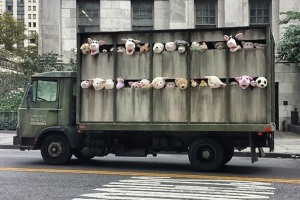Assigned Reading: Matthew Brower, “Trophy Shots: Early North American Photographs of Nonhuman Animals and the Display of Masculine Prowess.” Society and Animals 13, no. 1 (2005): 13-31.
Discussion Leaders: Shelby, Kerri, Rachel
1) In the reading it was said that ” replacing the rifle with the camera allowed the nation to continue to experience the stimulus if hunting without completely destroying the game.” Do you think that camera hunting was and effective way to promote and encourage conservation of wild life?
2) Roosevelt took the lead of the middle class manliness and used the interest as a tool of celebrating his accomplishments as a rancher, to recreating him as ?a modern Western hero? in attempts to shed the over-refined Harvard mask he had worn before. In doing so he was able to advocate for the preservation of the woods. Does the root of the general drive for advocating conservation matter if there is good that came?s from it?
3)One of the main arguments in this article is whether or not capturing a photograph of an animal is comparable to physically capturing one. Can a photograph of an animal hold as much value as a physical animal trophy (ie. antlers, heads, and tusks)? Does it lose its masculine prowess?
4)It is mentioned in the article that the dwindling of game to hunt resulted in the move from mass killings to a more selective hunt. The kills that counted towards the development of prowess were only considered if the animal was given a fighting chance. Realistically speaking, was the animal really ever given a chance in the face of death by human? How does this shape the image of ?etiquette? associated with the modernized hunt?
5)People became disconnected from nature and sought to reconnect through hunting, so camera hunting emerged around this time. Would the emergence of camera hunting allow people to become more connected with nature than hunting with a gun? And how would the hunter’s encounter with the wilderness change?

